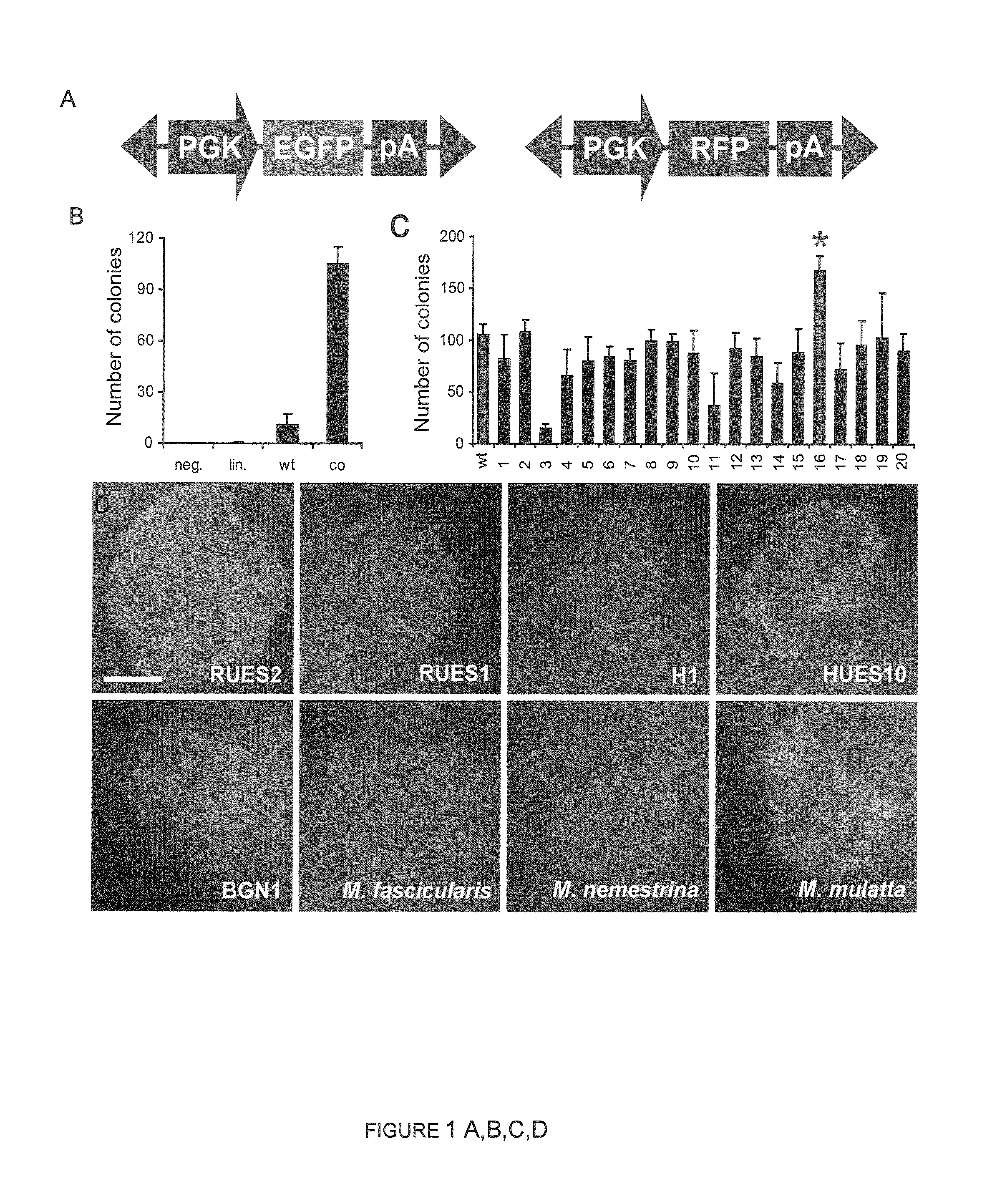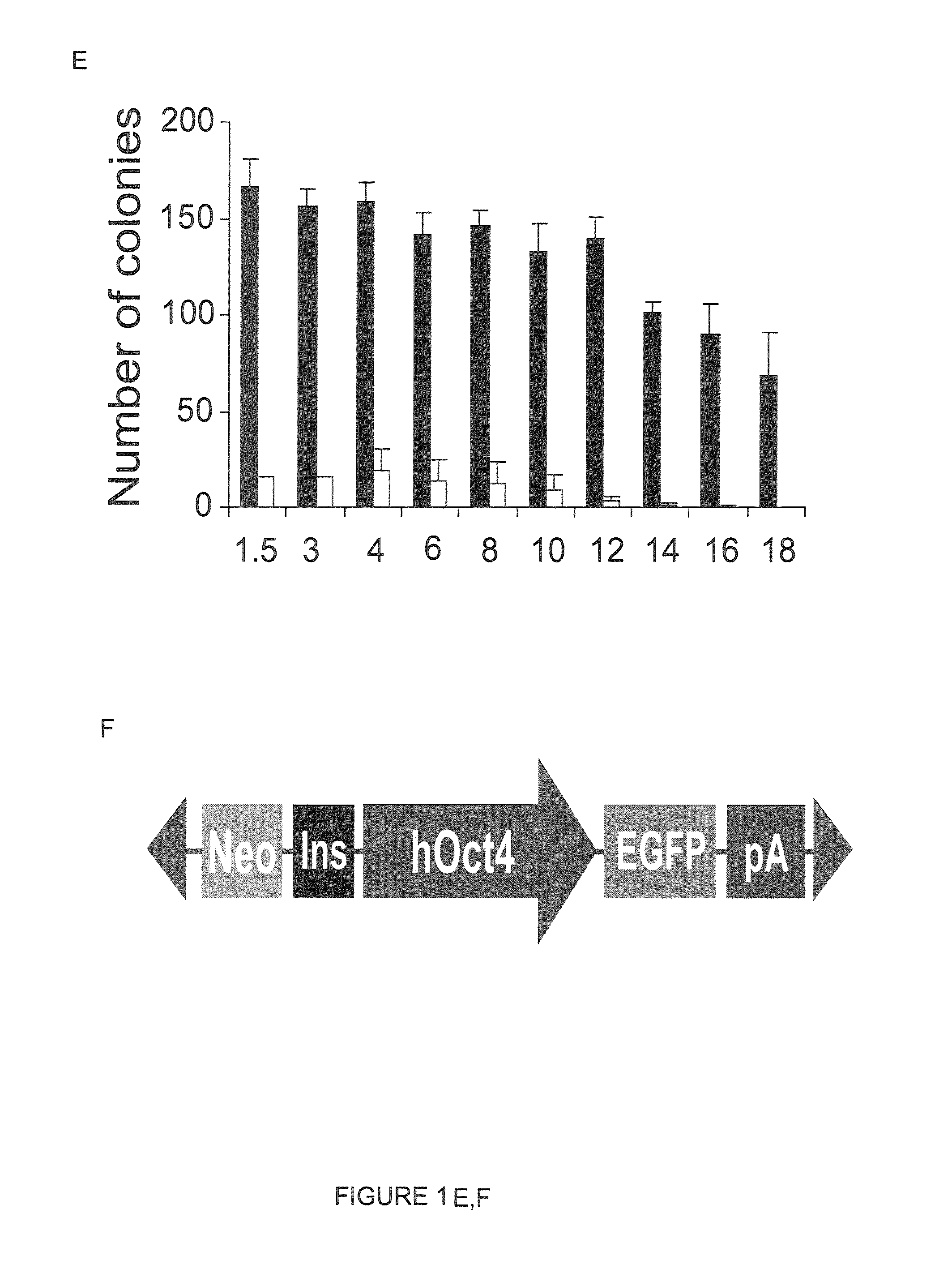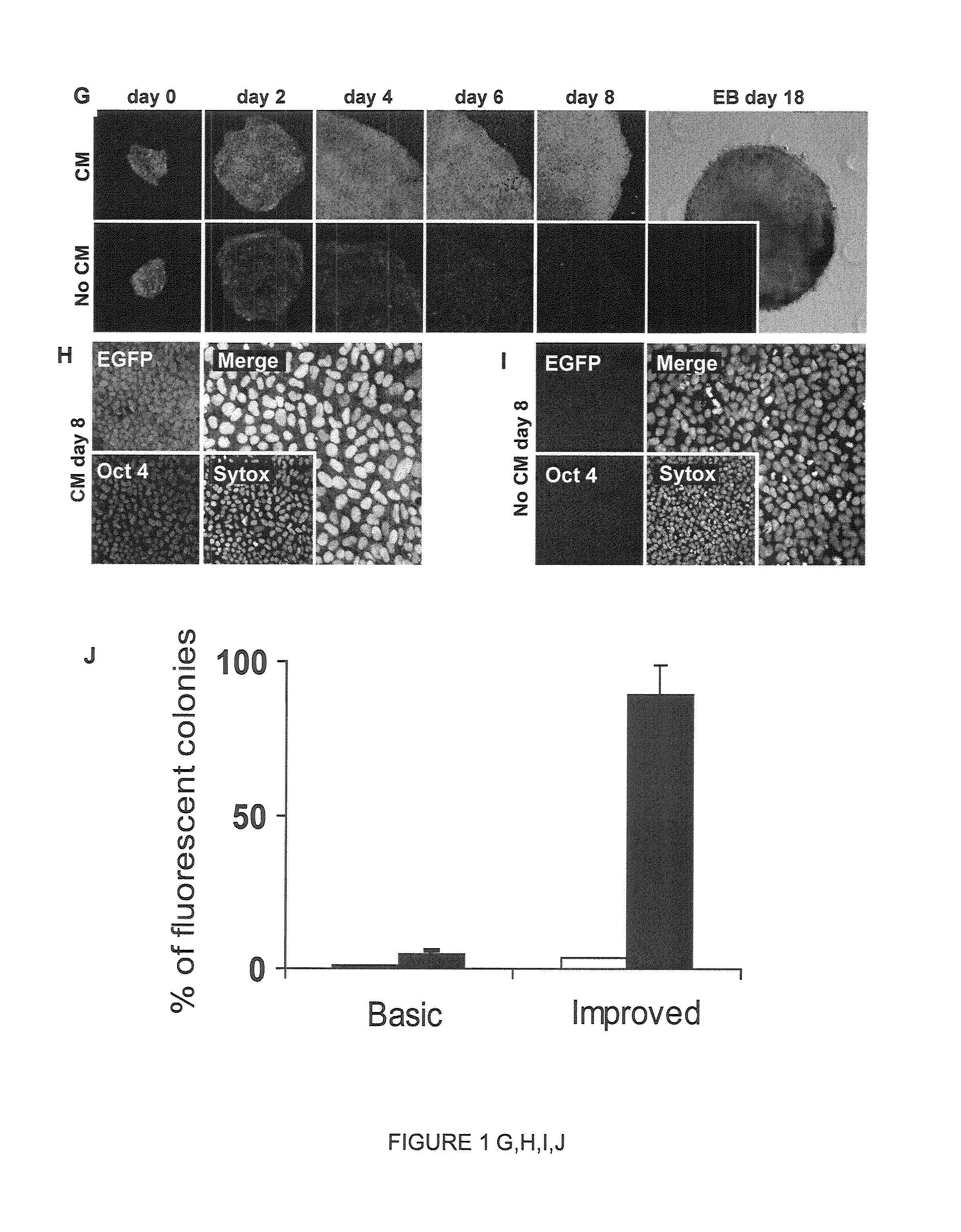Enhanced PiggyBac transposon and methods for transposon mutagenesis
a technology of piggybac and mutagenesis, which is applied in the field of enhanced piggybac transposon and methods for transposon mutagenesis, can solve the problems of limiting the use of selectable markers, limiting the use of inducible cassettes, and difficulty in generating transgenic hesc lines and the use of reporter systems or gain-or-loss of function approaches, etc., and achieves enhanced piggybac transposon and increased transposition frequency
- Summary
- Abstract
- Description
- Claims
- Application Information
AI Technical Summary
Benefits of technology
Problems solved by technology
Method used
Image
Examples
example 1
Methods
[0143]DNA Constructs.
[0144]The original PiggyBac transposase DNA was obtained from Dr. M. Fraser (University of Notre Dame, Ind., USA). The ePiggyBac transposase cDNA was custom synthesized. To generate helper plasmids, transposase cDNAs were cloned in PBLUESCRIPT™ (Stratagene, La Jolla, Calif., USA) downstream of a human phosphoglycerate kinase (PGK) or CAG promoter and upstream of an SV40 polyadenylation signal sequence. Minimal 313 bp 5′TR and 235 bp 3′TR were custom synthesized and cloned respectively upstream and downstream of expression cassettes containing the PGK promoter driving EGFP (BD Biosciences, San Jose, Calif., USA) or tagRFP (Evrogen, Moscow, Russia). The plasmid rescue system also included an ampicillin resistance cassette and an origin of replication from in PBLUESCRIPT™ cloned between the 5′- and 3′-terminal repeats. To improve gene transfer efficiency, mutations in terminal repeats were introduced using the GeneMorph II random PCR mutagenesis system (Stra...
example 2
Activity of ePiggyBac in hESC and Non-Human Primate ESC Lines
[0163]Gene delivery experiments were performed in hESC and non-human primate ESC lines. FIG. 1d demonstrates that ePiggyBac efficiently transferred EGFP- or RFP-expressing transgenes in different hESC lines. Importantly, ePiggyBac-mediated gene delivery does not alter the hESC karyotype (FIG. 8) or the ability of hESCs to express pluripotency markers, form embryoid bodies and differentiate into all three germ layers (FIG. 9 and FIG. 10). In addition, no silencing of fluorescent protein expression was observed after over 40 passages and gene transfer efficiency remained high in non-human primate ESCs (FIG. 1d) indicating that ePiggyBac can be used as a generic gene delivery system in primate ESCs.
example 3
ePiggyBac can be Used to Deliver Large Inserts into the hESC Genome
[0164]One of the most important advantages of the use of the PiggyBac system over other gene delivery systems lies in the PiggyBac transposon's ability to carry large DNA inserts (Ding, S., et al. (2005) Cell 122: 473-483). To investigate ePiggyBac's ability to integrate large DNA constructs in the hESC genome, inserts of increasing size were added to the transposon (FIG. 1E). It was found that although transposition efficiency decreased significantly for inserts larger than 14 Kb, ePiggyBac could deliver inserts of up to 18 Kb in size to the hESC genome, which is larger than the insert size delivered by the original PiggyBac system (FIG. 1E), or the maximum 14.3 Kb insert size previously reported for mouse embryos (Ding, S., et al. (2005) Cell 122: 473-483).
PUM
| Property | Measurement | Unit |
|---|---|---|
| density | aaaaa | aaaaa |
| temperature | aaaaa | aaaaa |
| length | aaaaa | aaaaa |
Abstract
Description
Claims
Application Information
 Login to View More
Login to View More - R&D
- Intellectual Property
- Life Sciences
- Materials
- Tech Scout
- Unparalleled Data Quality
- Higher Quality Content
- 60% Fewer Hallucinations
Browse by: Latest US Patents, China's latest patents, Technical Efficacy Thesaurus, Application Domain, Technology Topic, Popular Technical Reports.
© 2025 PatSnap. All rights reserved.Legal|Privacy policy|Modern Slavery Act Transparency Statement|Sitemap|About US| Contact US: help@patsnap.com



